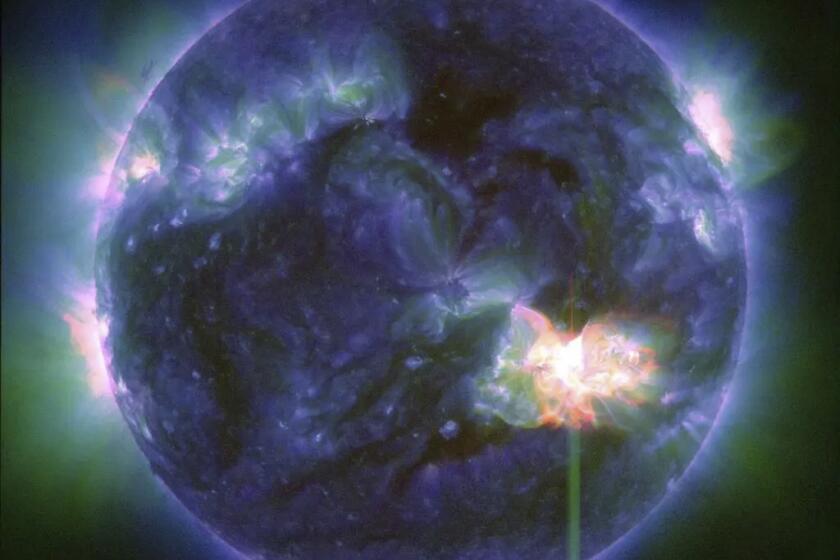Desalination Plant Passes Initial Test : Catalina: Since June the island has gotten a third of its water from the new facility. Experts say the results of the salt-extracting experiment are encouraging.
For six months now, a third of Santa Catalina Island’s freshwater supply has come from the sea in the first practical test of desalination technology in the state. The results, experts report, are encouraging.
When the water-short islanders switched on a new 132,000-gallon-a-day desalination plant last June, the big question was cost. Other thirsty, drought-plagued cities along the coast were watching to see whether the $3-million, high-tech experiment would prove practical--and cost-efficient.
“‘The proof’s in the pudding,” said Keith LeFever, manager of the desalination plant, owned and operated by the Southern California Edison Co., which provides the island with both water and electricity. “We’ve zeroed in on the true operating costs . . . and what we see looks good.”
LeFever said the cost comes to $5 for every thousand gallons of drinkable water. Edison charges another $3 per thousand to treat and blend the plant’s production into the island’s regular water system. The $8 total is three to four times more than the cost of water in mainland cities, reports show.
Still, experts say the results are encouraging, if for no other reason than that desalination provides another source of drinking water for drought-plagued California.
“This is the first real application of using seawater in a regular water system in California,” said Gary Snyder, chief engineer for the giant Metropolitan Water District of Southern California, the area’s primary water wholesaler.
The MWD imports most of Southern California’s water and is currently studying the feasibility of constructing a large desalination plant, possibly in Baja California. Snyder said the Catalina experiment is proving that desalination can produce water at costs that can be practical, particularly in areas where water shortages are acute.
The Catalina project was developed because leaders there had no other good choices. The resort island 22 miles off San Pedro has a permanent population of only 2,515 and is dependent on tourism. A million people a year visit the island, according to the Chamber of Commerce.
Five years of drought have seriously depleted the natural water supply for the tiny port city of Avalon and other resort spots around the island. Without the desalination plant, the island faced severe shortages and the costly importation of water by barge.
Catalina got the desalination plant in a deal with a developer who wanted to build a 330-unit luxury condominium project in the cliffs above Hamilton Cove. Blocked by the lack of water, the developer, Hamilton Cove Associates, agreed to pay for the desalination plant and give it to Edison in exchange for enough water for the condo project.
The new plant was built on Pebbly Beach, next to the Edison’s electrical power generation plant. Using a process called reverse osmosis, the seawater is pumped under pressure through porous membranes that extract pure water from the briny intake. A thousand gallons of seawater produces 300 gallons of drinking water, LeFever said. The remaining brine is dumped back into the ocean.
The results have been so good that the utility company plans to increase the plant’s capacity and produce another 53,000 gallons a day.
More to Read
Start your day right
Sign up for Essential California for news, features and recommendations from the L.A. Times and beyond in your inbox six days a week.
You may occasionally receive promotional content from the Los Angeles Times.






